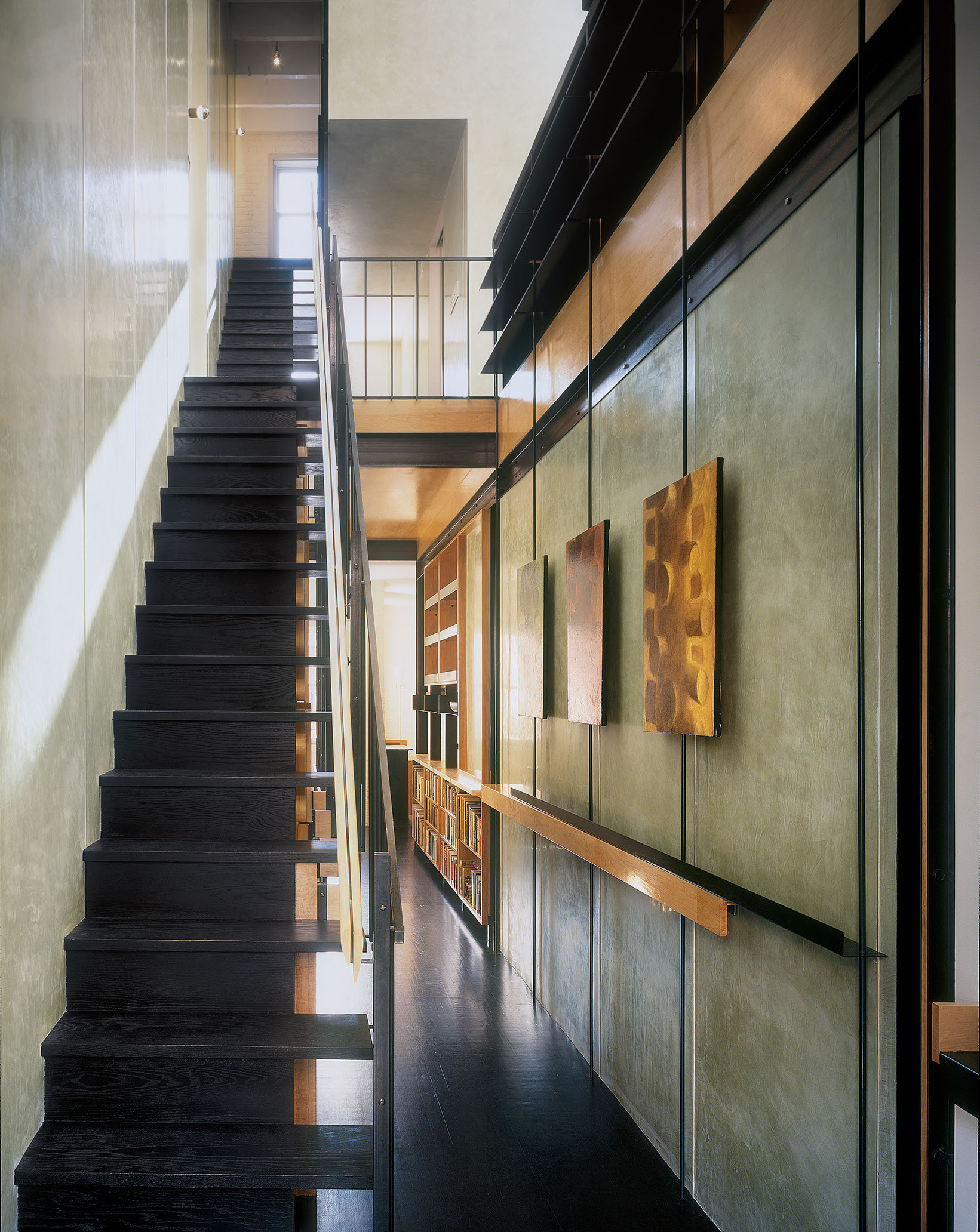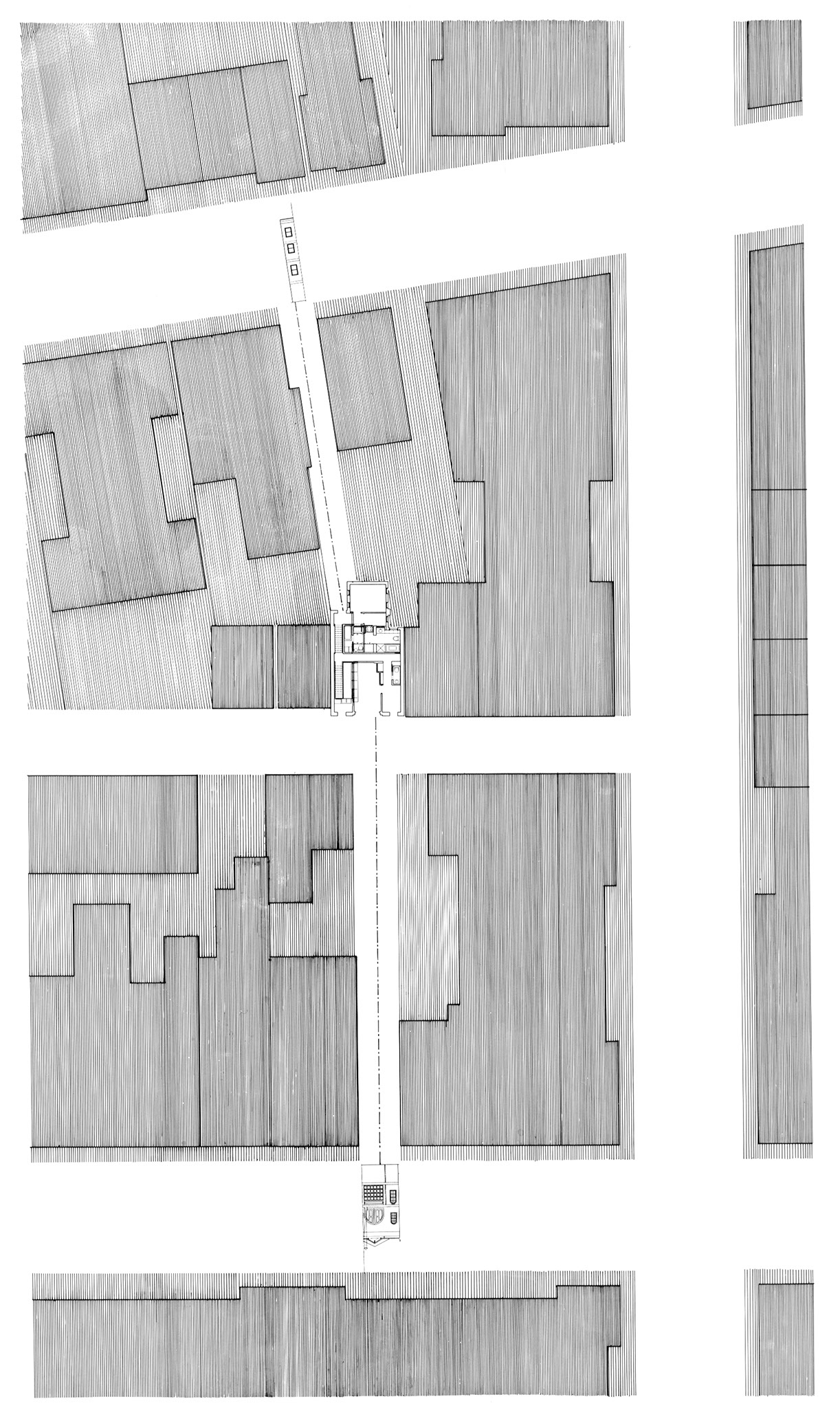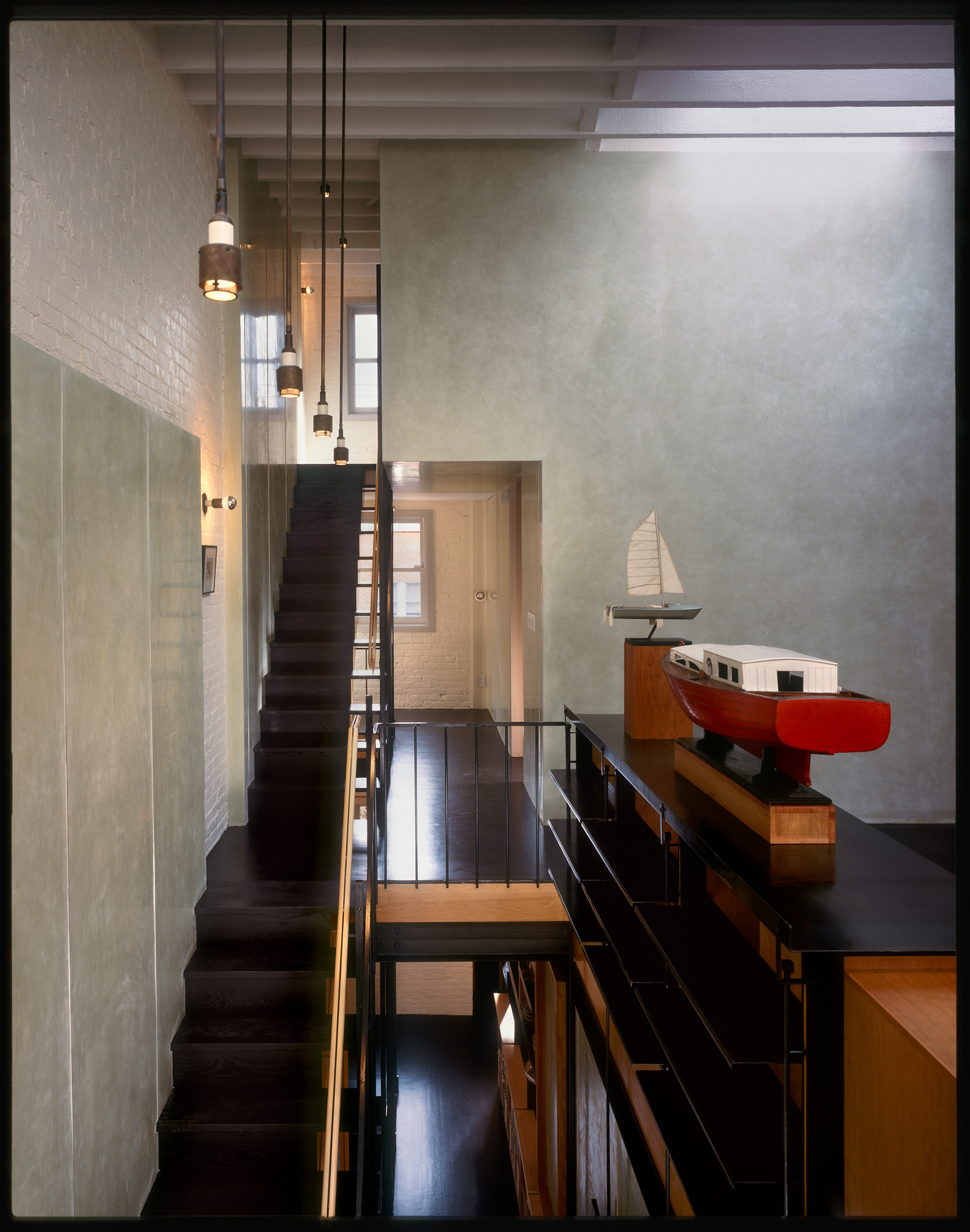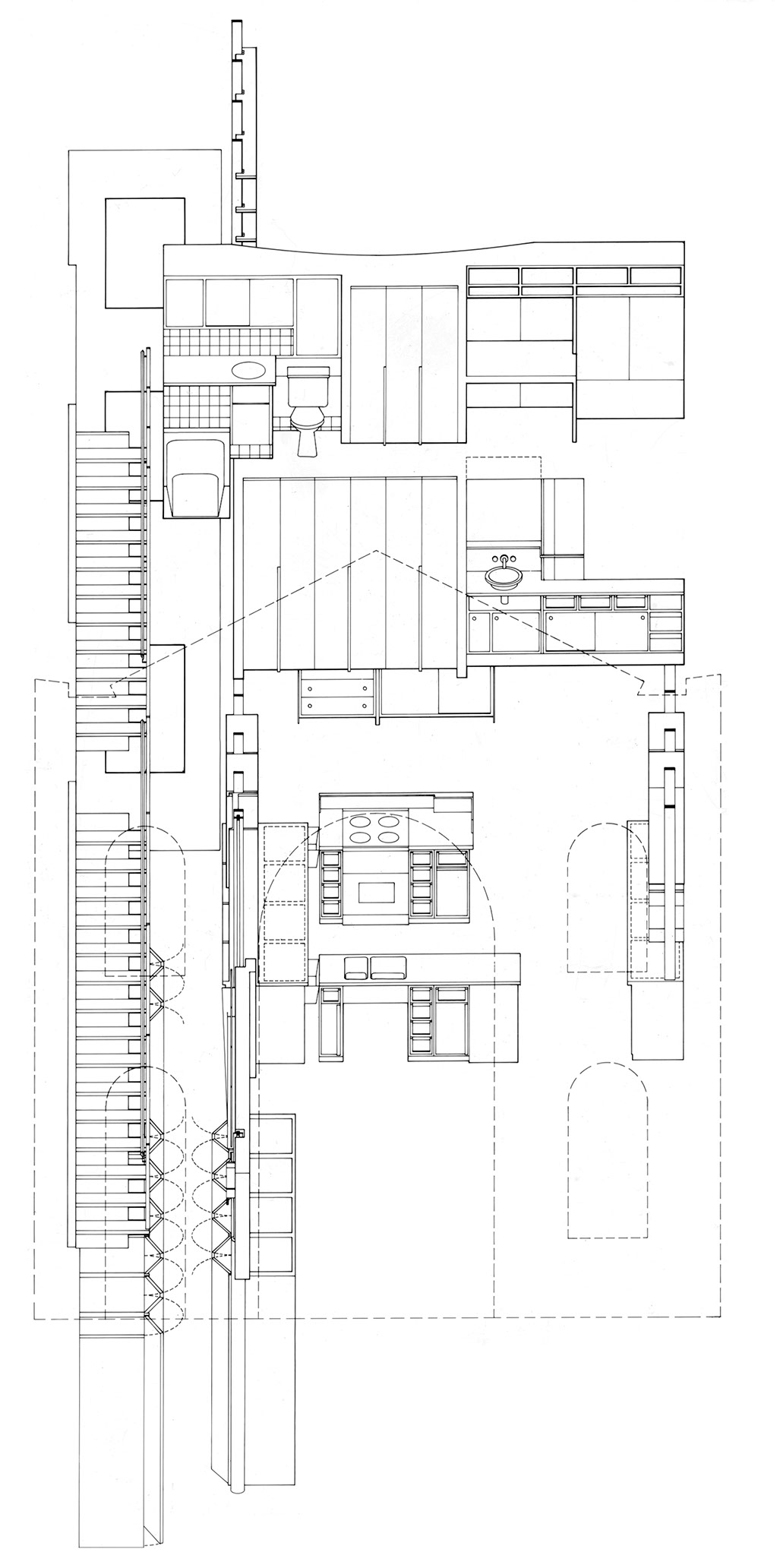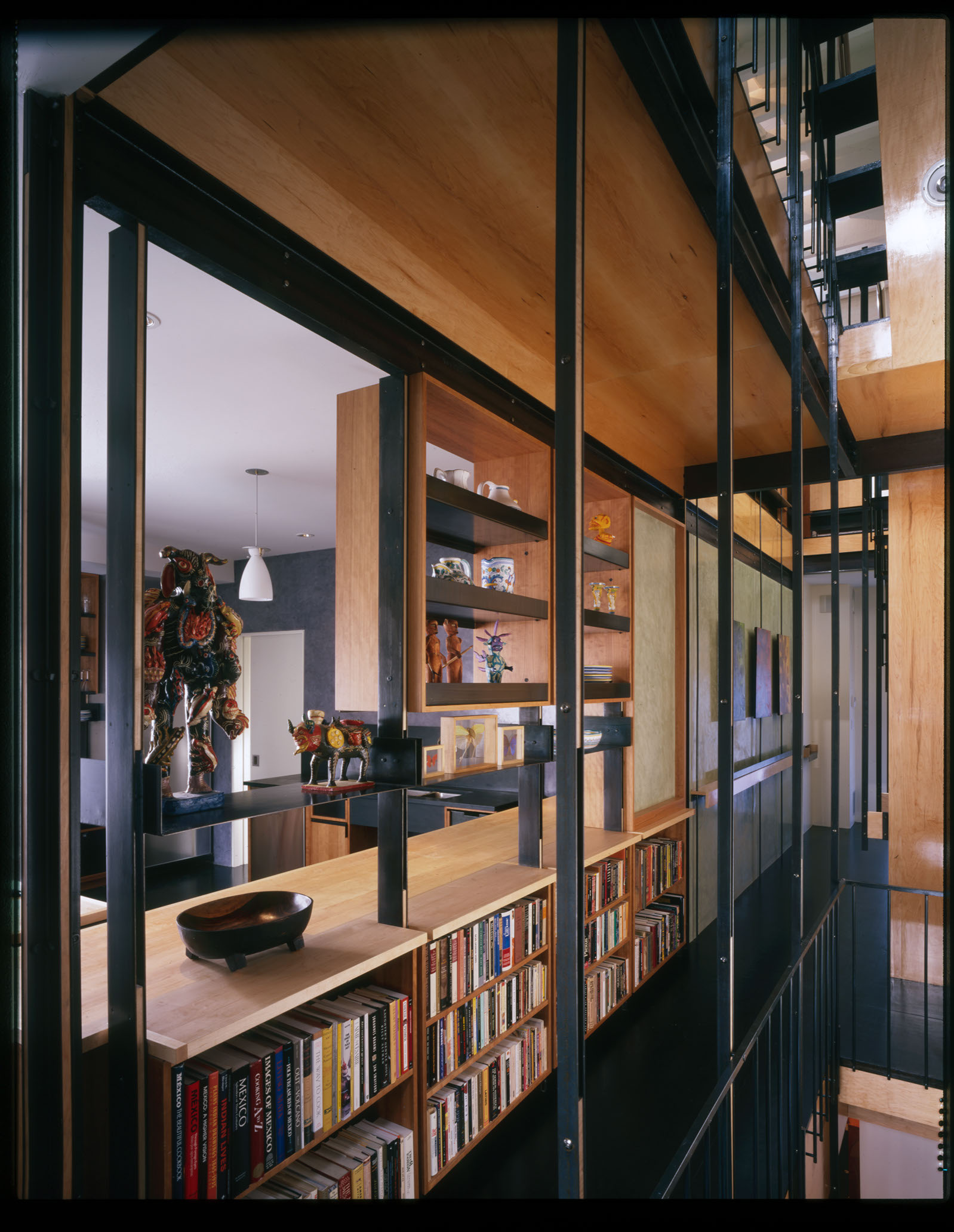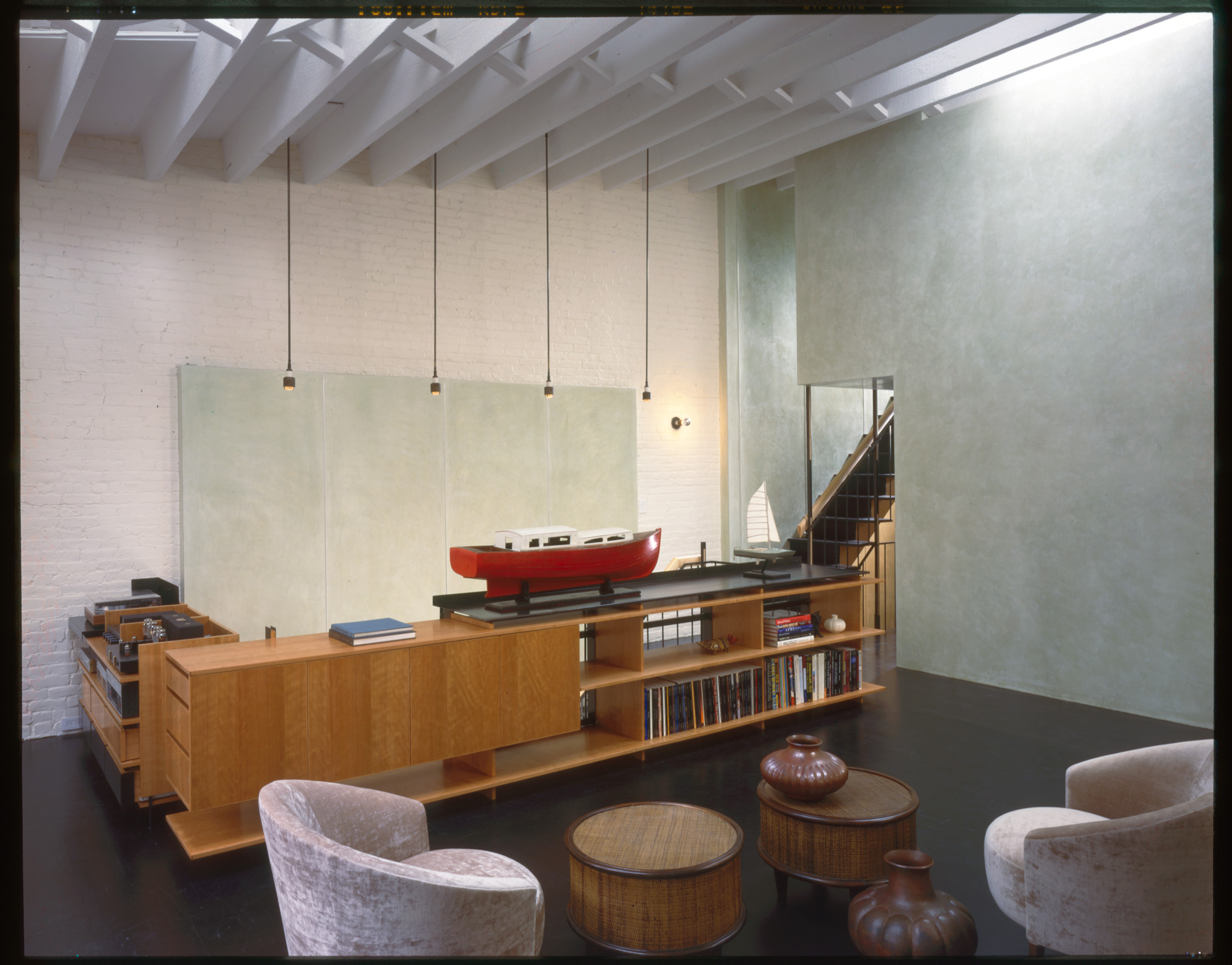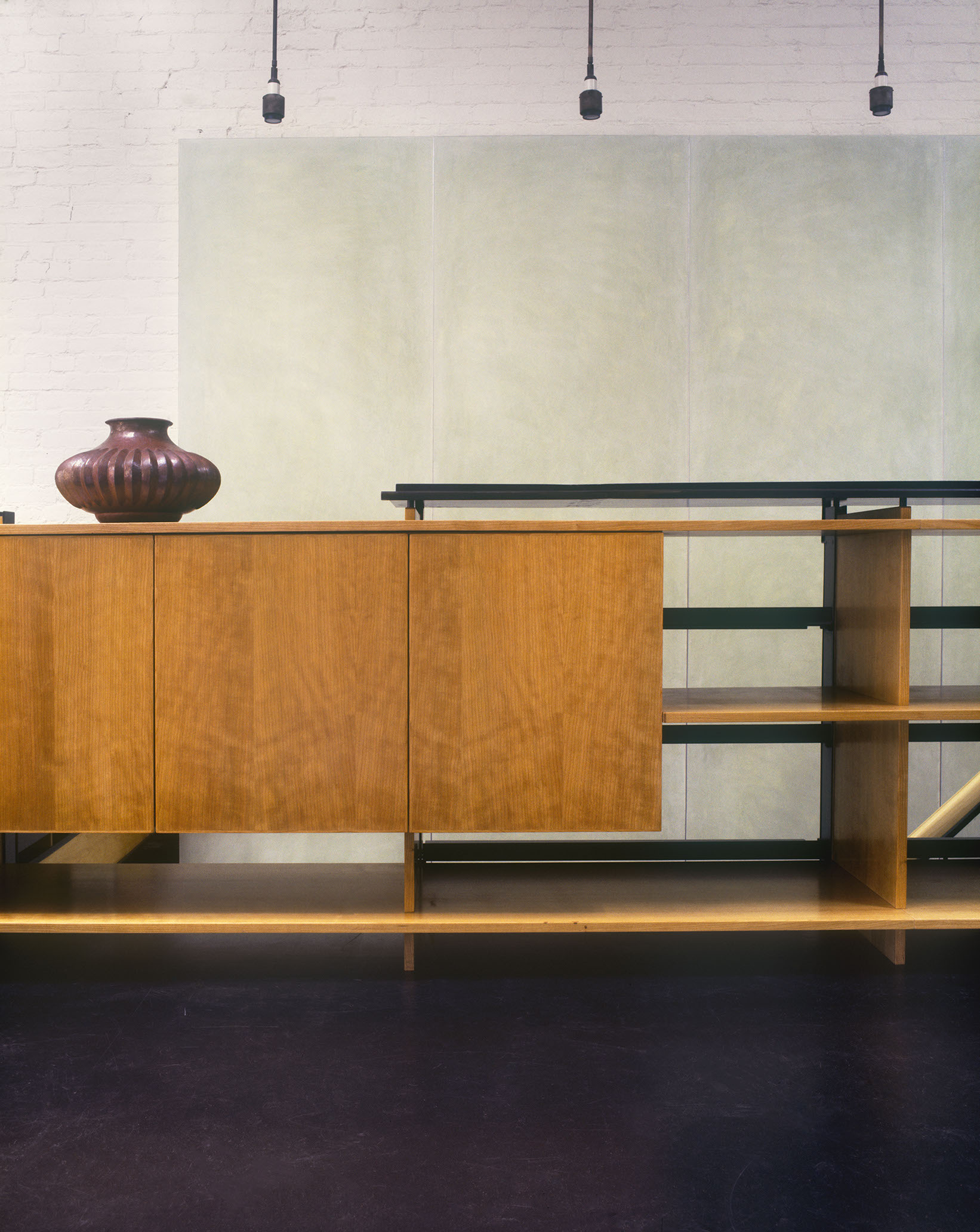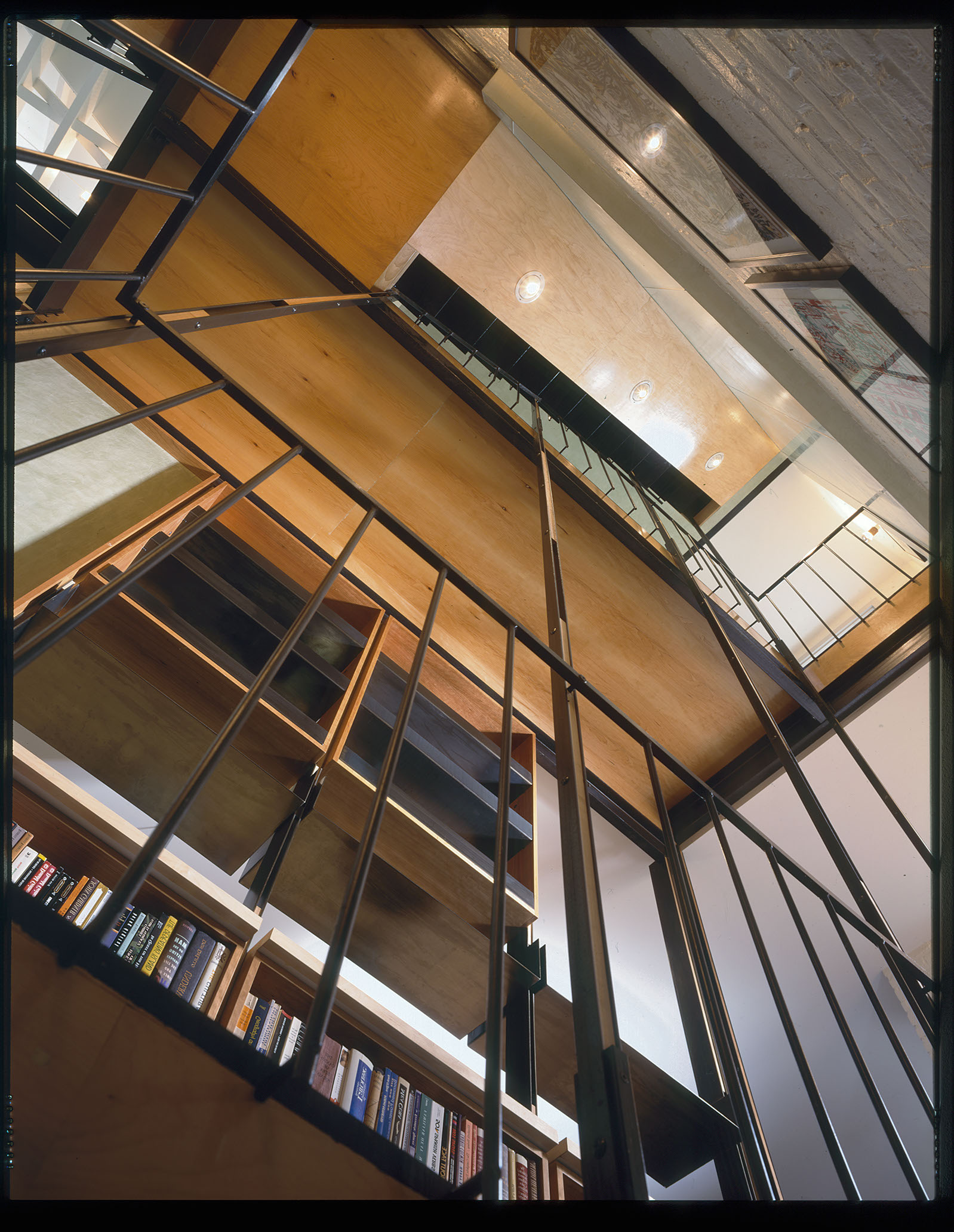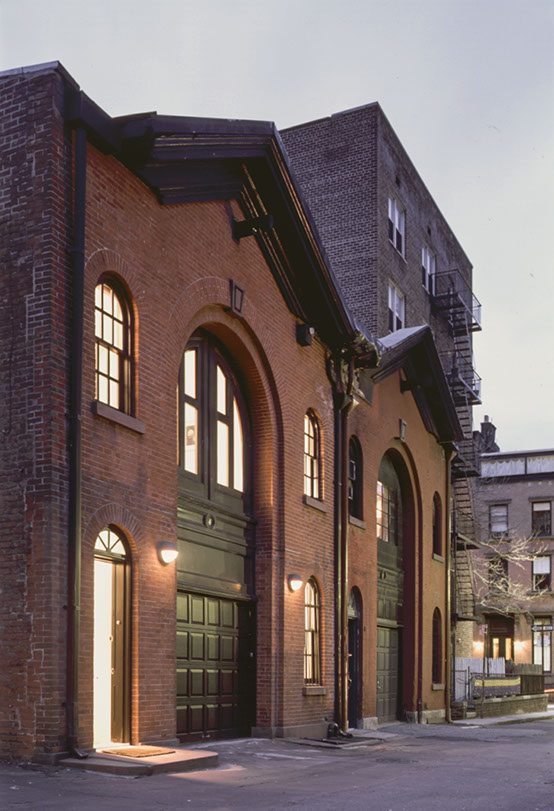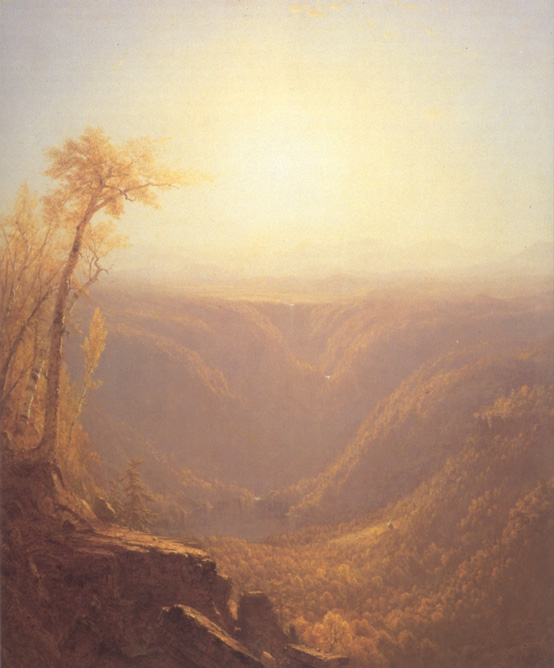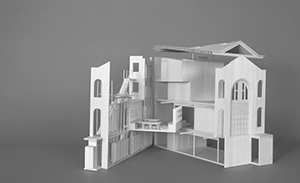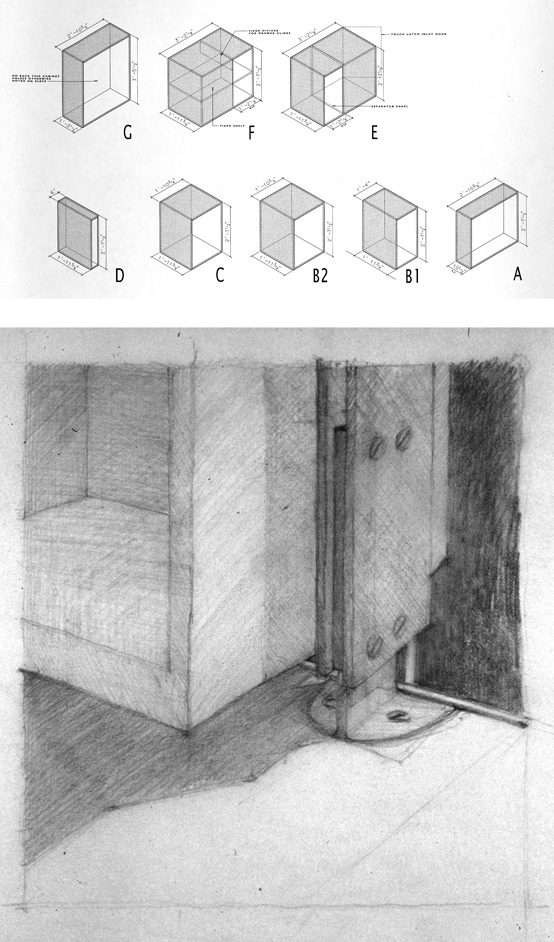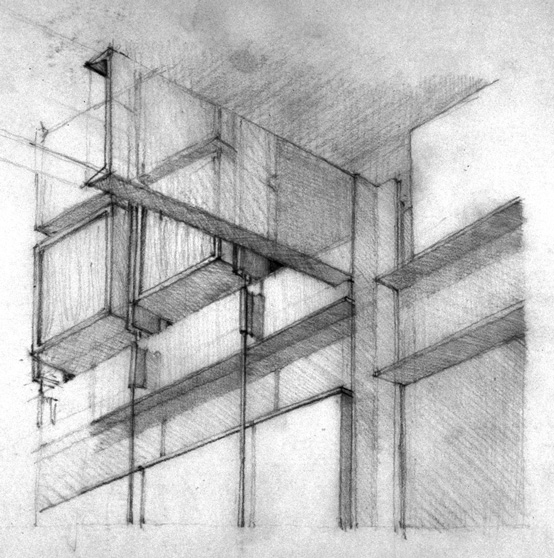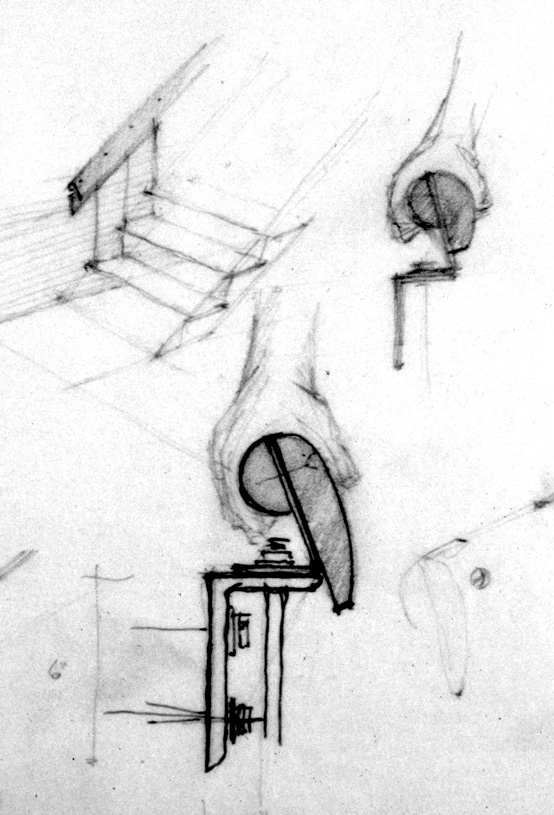This Brooklyn carriage house is now in its third incarnation. Originally constructed as a stable for horses and their caretakers, it had been modestly renovated as a one-bedroom home in the 1970s; a second renovation allows the built space to accommodate a three-bedroom home and full-floor office.
Our renovation explores this building’s history, which itself speaks to a more general relationship between landscape and architecture. The limitations of this 950-square-foot lot include multiple landmarked facades containing translucent (but not transparent) windows; these challenges have been realized as opportunities to form an interior landscape. To connect an introspective domestic space with a broader, exterior landscape, we’ve employed techniques present in nineteenth century Picturesque and Luminist painting. The result is a project in which light serves as the most important organizing principle.
During the day, sunlight cuts through all floors, running from the entry vestibule to the rear of the lot; this arrangement tacitly acknowledges the front-to-back connection and original organization of the carriage house. In the Luminist tradition, pathways like roads and streams would weave from the front to the back of a composition, inviting the viewer into a narrative that unfolds as focus moves into the distance. Interior light plays a similarly organizational role here, connecting the four floors and creating a continuous, illuminated path that passes through fields of books and ephemera. In this way, the staircase resolves the owners’ desire for an uncluttered and expansive living space which acts as a conduit for spatial organization, circulation, storage space, and furniture arrangements.
